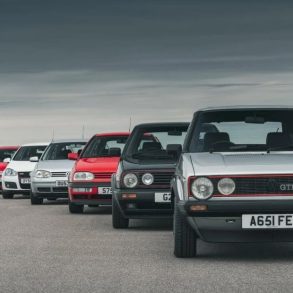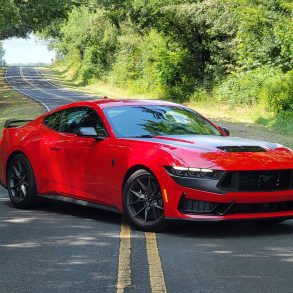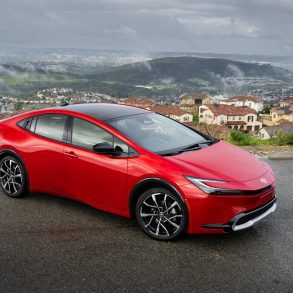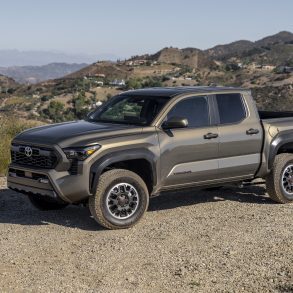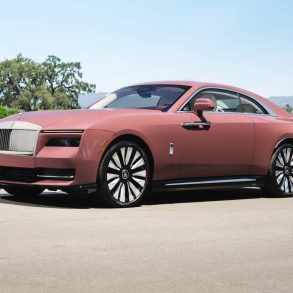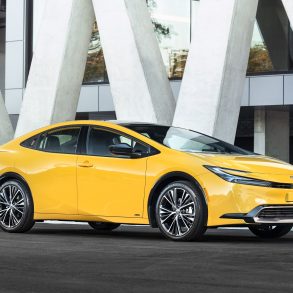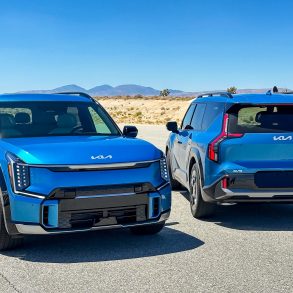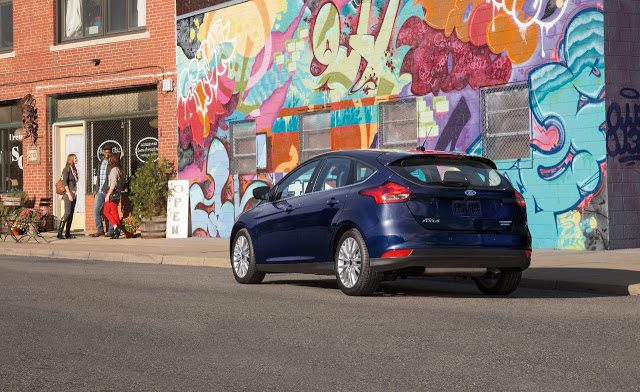
In this latest addition to the ever-growing list of content made available by GCBC, we’re allowing you to ask us to sort the sales data the way you want it. In fact, you can ask anything, and we might just choose to answer your question even if you ask, “Should I buy a used Aston Martin?” If you want to ask a question, email [email protected].
This week, Thomas O. From Nova Scotia wants to know the following: “Which car is more enjoyable: a Ford Focus Titanium or Ford Fiesta Titanium?”
Aside from niche models like the ST versions of both and the three-cylinder Fiesta EcoBoost, it’s worth noting that Titanium trim Ford small cars differ only from non-Titanium versions in terms of features and equipment: sunroofs, leather, alloys, etc.
Thus, when say that the 2016 Ford Fiesta is more fun to drive than the 2016 Ford Focus, we can apply that verdict across the board, from the S to the SE to the Titanium.
But more enjoyable overall? The 2016 Ford Focus is much more refined, quiet, spacious, and attractive than the 2016 Ford Fiesta.
From more details in our questioner’s correspondence, we know that the fitment of child seats is going to be an important issue. And the dearth of automatic-equipped Titanium versions of either car – either because you can’t have one or because dealers aren’t stocking them – calls into question the merits of the Focus if equipped with Ford’s poorly executed 6-speed dual-clutch PowerShift automatic transmission.
2015 Ford Focus SE Hatchback Driven Review
2013 Ford Focus ST Driven Review
2014 Ford Fiesta SE Hatchback Driven Review
2014 Ford Fiesta EcoBoost SFE Driven Review
With that in mind, here are high points and low points for both cars: Ford Fiesta Titanium vs. Ford Focus Titanium.
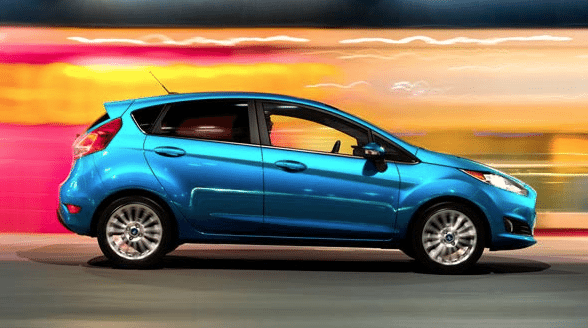
FIESTA GOOD
Best in class steering, expert ride/handling balance, progressive brake pedal. As a Titanium hatchback with an automatic, the Fiesta’s base price is almost $5,000 less than the Focus’s.
 |
FIESTA BAD
Like its subcompact rivals – Accent, Fit, Versa, Rio, Yaris, Sonic – the Fiesta lacks refinement. In 2010, for a subcompact, it felt somewhat ahead of its time in terms of noise, vibration, and harshness. Now it’s buzzy, noisy, and underpowered. We’ve tested a couple Fiestas with child seats in the back, front and rear facing, and wouldn’t want to do it on a regular basis. Space behind the rear seats, at 422 litres, is 37% smaller than what you’ll find in the Focus.
FOCUS GOOD
It’s not quite as pert and perky as the Fiesta, but this is still a very impressive car when it’s being hustled down a twisty rural road. The Focus is also plenty powerful and torquey in standard form and does a great job of isolating road imperfections and noise. It also looks like the more mature car. Overall, the Focus may cost $5,000 more – real-world pricing will likely be a lot closer – but it feels like it should cost $7,500 more.
FOCUS BAD
Driver comfort is hugely subjective. Nevertheless, I’m a lanky guy and find the Focus driver’s environment to be too cramped, further inhibited by poor visibility. The 6-speed PowerShift is behind the times. Some people won’t care. For others, it’ll be a deal breaker. As much as Fiesta rear seat space is unimpressive, you anticipated that. In the Focus, you thought there’d be more space.
VERDICT
If you are happy to spend the extra, the Focus is the much more enjoyable car to live with on a daily basis. Yes, there are moments when the Fiesta’s charming chassis will be more impressive and alluring, but in the daily grind, those moments may not come up with sufficient frequency. And the sacrifices made to squeeze into the less refined Fiesta won’t be worth it.
Timothy Cain is the founder of GoodCarBadCar.net, which obsesses over the free and frequent publication of U.S. and Canadian auto sales figures. Follow on Twitter @goodcarbadcar and on Facebook.

